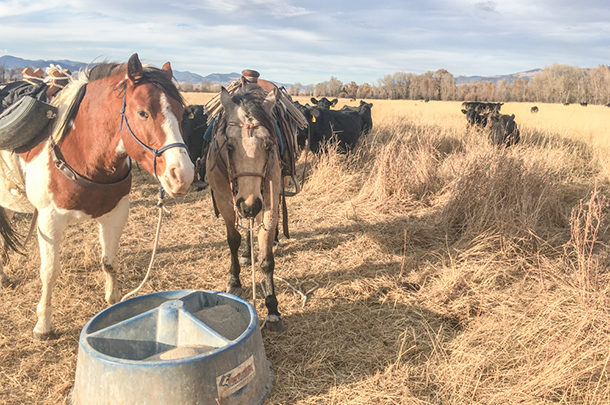Reducing input costs is essential for any business manufacturing or raising a product that is at the mercy of commodity markets. Ten years ago in the cow-calf business, the cost to carry a cow for one year averaged roughly $440 per mother cow. Today it’s around $800 per cow. What changed?
One reason is we have become too focused on maximizing instead of optimizing production. Maximizing pounds of calf weaned per cow has rarely proven profitable in the long term. Realistically we should be looking at maximizing profit instead of production. We can feed, implant, supplement, inject and breed our way to a very large calf, but these are short-term fixes that create a higher input production model.
Before adding expenses, look at ways to decrease them. Are you heavily reliant on high inputs of feed, equipment and labor, the three largest expenses on most cow operations?
Here are other points to consider:
1. Altering cow size and time of calving greatly reduces feed, labor and equipment needs. A herd of 100 cows weighing 1,000 pounds each that wean 550-pound calves is a total of 55,000 pounds at $1.70 per pound, which equals $93,500. In order to run larger cows, stocking rate must be reduced. Seventy-seven cows weighing 1,400 pounds, each weaning a 700-pound calf, results in 53,900 pounds at $1.55, which equals $83,545. The short story is smaller framed, later calving cows increase income by almost $10,000.
2. Truthfully analyze equipment needs and eliminate, consolidate and upgrade where it makes sense. This reduces time and resources spent on maintenance and ownership.
3. Look at daily habits and determine if you are creating work just to keep busy. Are we doing it this way just because we always have? I think most of us are guilty of this at one time or another.
I’ve even had people tell me they don’t have a labor cost because they do everything themselves and don’t hire help. If you think your time is worth nothing, have I got a deal for you. Come work for me, and I’ll pay you minimum wage.
You won’t take that deal? Then your time is worth something; start acting like it.
4. Are you using high-maintenance genetics? Often high weaning weights are a result of a high milk production and large frames. Many environments don’t have the feed resources needed for big cows to produce high amounts of milk and continue to rebreed. Go for low-maintenance, easy fleshing genetics.
5. Cows that require “babysitting” during calving need to go away as well. With all of the calving-ease bulls we have available, why are we still calving like we are going to have to pull every calf? This creates additional time, labor and monetary expense, taking us backwards.
6. Manage and ration mineral supplements. Using the same supplements year-round may be convenient, but using different supplements for different times of the year and your production cycle can save up to 15 percent off your supplement bill. Some cattle require higher levels of supplementation for various reasons, and all these animals need to be culled from the herd.
Providing “every opportunity to stay in the herd,” as I’ve heard some say, allows for inefficient cattle to stay in production, thus decreasing profits and sustainability of the operation. Breaking from the norm may be painful at first, but the benefits outweigh the initial effort. At the end of the day, more profit trumps the bragging rights for more pounds. ![]()

-
Billy Whitehurst
- Makale Livestock
- Whitehall, Montana
- Email Billy Whitehurst
PHOTO: Five input reduction strategies are captured in one photo. Low-maintenance genetics (1); spring calving (2); resulting in thriving on low-quality, dormant forage with no protein or energy supplement (3); coming to the feeder to check out their weekly mineral ration (4); delivered by four-legged equipment already on hand that require no fuel inputs (5). Photo by Billy Whitehurst.










